#Nutrition and hydration
Explore tagged Tumblr posts
Text
Is Your Syringe Driver Training CQC-Compliant? What Inspectors Look For in 2025
Yes, your syringe driver training must be CQC-compliant in 2025—and that means it should be clinically up-to-date, outcomes-based, and tailored to real-world care settings. The Care Quality Commission (CQC) now looks beyond checklists and focuses on whether your training genuinely improves patient safety, communication, and holistic care delivery.
Why Syringe Driver Training Matters More Than Ever
In today’s care landscape, the use of syringe drivers is no longer limited to specialist palliative care units. From community nursing to residential care homes, staff are increasingly expected to manage continuous subcutaneous infusions. Yet improper use can lead to dosage errors, distress, or even harm to patients.
That’s where syringe driver training becomes crucial. But training alone isn’t enough. It must be CQC-compliant to ensure it aligns with the regulator’s emphasis on safe, effective, caring, responsive, and well-led care services.
So what exactly do CQC inspectors expect to see?
1. Evidence of Competence, Not Just Attendance
One of the most common pitfalls is mistaking a certificate of attendance for proof of competence. In 2025, CQC inspectors will ask a simple but pointed question: Can your staff safely and confidently manage a syringe driver right now?
Training providers must go beyond theory. The focus is now on demonstrated competence, including:
Hands-on practice
Realistic simulations
Scenario-based assessments
Follow-up evaluation in the workplace
Care settings should document not only course completion but also reflective learning, observed practice, and ongoing competence checks.
2. Integration with Holistic Care Principles
A syringe driver is not an isolated task. It involves communication, symptom management, nutritional considerations, and skin integrity monitoring.
CQC expects training to reflect this interconnectedness. For example:
Can carers communicate sensitively with family members about syringe drivers?
Do they understand how a patient’s nutrition and hydration may influence medication tolerance or efficacy? Learn more here
Are staff able to identify early signs of tissue viability around the infusion site?
When inspectors visit, they’ll look at how syringe driver knowledge is applied within the wider care plan.
3. Training Updated to Reflect Best Practice Guidelines
Medicine moves quickly. What was best practice two years ago may now be outdated. CQC inspectors expect training to be:
Aligned with NICE guidelines and local NHS protocols
Regularly reviewed and updated (at least annually)
Delivered by trainers with current clinical experience
If your training still references obsolete devices or no longer-used drug combinations, it could raise concerns during inspection.
4. Personalisation to Role and Setting
In 2025, one-size-fits-all training won’t cut it. CQC inspectors look for contextual relevance. Are home care workers receiving training tailored to community settings? Are senior nurses learning how to supervise or troubleshoot syringe drivers?
Training should reflect:
The learner’s role (e.g., healthcare assistant vs. registered nurse)
The care environment (hospital, home, hospice)
The specific patient population
This ensures staff are not only trained but also prepared for the situations they will encounter.
5. Real-World Scenario Testing
Gone are the days of simple multiple-choice quizzes. CQC now values realistic scenario-based learning to test:
Clinical judgment under pressure
Recognition of side effects or equipment issues
Decision-making in ethical dilemmas (e.g., what to do if a patient refuses medication)
A good syringe driver training course will include role-plays, case studies, and simulated emergency situations. These help learners apply theoretical knowledge in a practical, emotionally intelligent way.
6. Link to Broader Medication Competence Frameworks
Syringe driver training doesn’t stand alone. CQC wants to see it embedded within a wider medicines management strategy.
That might include:
Blood Glucose Monitoring Training for diabetic patients on continuous pain relief
Training on anticipatory medicines and controlled drug protocols
Clear policies on documentation, audit, and reporting
The more integrated the training, the safer and more accountable your service will appear to regulators.
7. Inclusion of Emotional Intelligence and Communication Skills
Administering medication via syringe drivers often takes place at sensitive times—often end-of-life care. Staff need not only clinical skills but also emotional intelligence.
CQC will ask:
Can your team explain syringe driver use without causing distress?
Do they respond to family anxiety with empathy?
Are they trained to recognise signs of distress or pain beyond verbal cues?
These soft skills are covered in Communication in Health and Social Care training, and they form an essential part of modern compliance.
8. Evidence of Ongoing Learning and Supervision
CQC inspectors look favourably on services that treat training as a continuous process, not a box-ticking event. What does that look like in practice?
Reflective practice sessions
Peer reviews or clinical supervision
Regular refresher courses
In-house mentorship
This approach encourages a learning culture—one of the strongest indicators of a well-led service.
9. Staff Confidence and Readiness
You can have the best training program on paper, but what matters most is how confident staff feel in real life. CQC inspectors will often ask team members:
Have you received syringe driver training?
Do you feel confident using one?
What would you do if something went wrong?
If staff hesitate or give vague answers, it suggests the training has not been embedded.
10. Service User and Family Feedback
The CQC’s key question: Is it caring?
Even highly technical procedures like syringe driver use must be delivered with compassion and clarity. Inspectors may review:
Complaints or compliments related to medication delivery
Family surveys about communication and dignity
Care notes reflecting person-centred support
Positive outcomes here reflect well on your training quality and values.
Final Thoughts: How to Future-Proof Your Syringe Driver Training
To stay CQC-compliant in 2025 and beyond, care providers need to shift their thinking. It’s no longer about just having training. It’s about having the right training—delivered by credible providers, grounded in current clinical practice, and aligned with real-world care needs.
Whether you’re updating your policies, preparing for a CQC visit, or onboarding new staff, ensure your syringe driver training reflects the complexity and compassion required in today’s care landscape.
Source : https://shreejitraining11.blogspot.com/2025/05/is-your-syringe-driver-training-cqc.html
0 notes
Text
Uncover a world of Which Foods Are Rich in Protein
In the realm of maintaining a robust and well-rounded diet, one nutrient takes center stage: protein. This unassuming element plays an intricate role in an array of bodily functions, functioning as a cornerstone for various physiological processes. Our journey through this expansive guide will navigate the intricate world of protein-packed foods, both originating from animal and plant sources. As…

View On WordPress
#balancing protein intake#broccoli#building muscle with protein#complete protein#cooking and protein content#cooking with tofu#cottage cheese#daily protein needs#dairy sources of protein#eggs#FAQs about protein#fish and seafood#Greek yogurt#incorporating protein into diet#kid-friendly protein foods#lean meats#legumes#nutrition and hydration#nuts and seeds#oats#plant-based protein#poultry#protein and hair/nail health#protein combining#protein deficiency#protein for athletes#protein smoothies#protein supplements#protein-enriched grains#protein-packed vegetables
0 notes
Text
Hydration Tips: 💧- That Might Actually Work - “science-based”
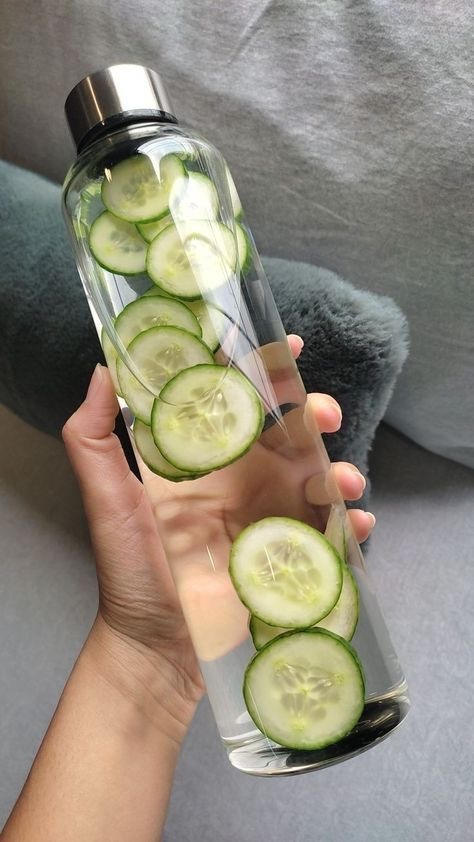
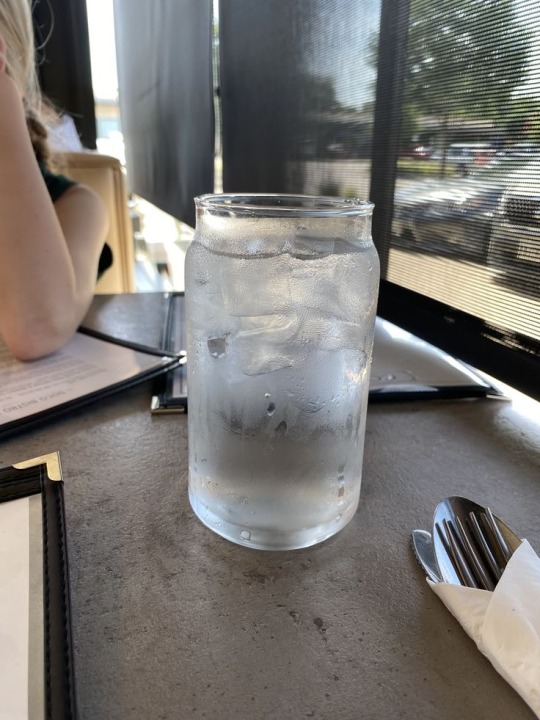
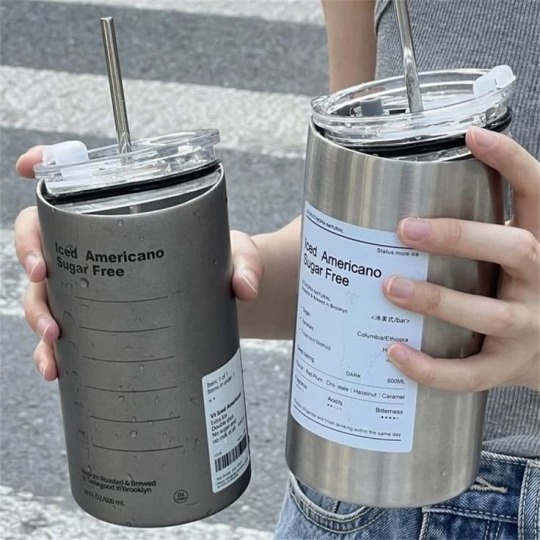
I know this is something people struggle with and I’ve been there too so I’ll share some of the things that have helped me aside from making it ✨aesthetic✨:
💧I’ve noticed that the bottles that encourage the most hydration for people are either clear or frosted with trackers and steel/double walled, they give the impression of cold water and might keep your water cool for longer, making you want to drink more.
💧The next tip is adding ice to your water or water you have chilled in the fridge, this is the kind of water that will quench your thirst and make you feel hydrated as you drink it.
💧Another thing you could do is add lemon/cucumbers/fruits to your water. You could also add water flavors or even electrolytes. When the body is dehydrated, it’s not enough to only drink plain water.
💧The last tip is adding reminders on your phone, or using water hydration apps that will. Alternatively, if you want something a little bit more fun, you could try the tamagotchi trick to stay more disciplined lol
These are the main and most important things to do when you want to stay hydrated. If you have any questions or more tips, you can share them in the comments.
#advice#hydration tips#wellness#mental health#drinking water#hydration#stay hydrated#hydrate or diedrate#remember to hydrate#hydratedskin#hydratedhair#self care#self love#self improvement#girlblogging#nutrition#health and wellness#healthy#selfcare#it girl energy#it girl#it girl aesthetic#it girl mindset#it girl mentality#clean girl#pinterest girl#that girl#it girl core#pink pilates princess#gilmore girls
27 notes
·
View notes
Text
💧Water maxxing
3L daily
non-plastic water containers if you buy yours (watch out for quality brands)
filter for tap water
copper flask
add lots of hydrating whole foods in your day
drops of whatever supplement or essence you like (I love chlorophyll and magnesium or iron)
himalayan salt
timer/some kind of notification for drinking
add fruits or mint to make it infused (I love making mint ice cubes)
track your intake – this has helped me so much
#clean girl#wonyoungism#glow up#self development#dream girl tips#nutrition#pink pilates princess#clean girl guide#health#clean eating#it girl guide#it girl#holistic wellness#holistic health#almond daughter#wellness#self care#hydration#fitness#fitspo#clean life#clean food#whole food#dream girl#model diet
18 notes
·
View notes
Note
If you're comfortable with answering, where did you start on the path to getting your diagnosis?
A lot of what you described sounds rather similar to what I've felt/went through, but I'm a bit anxiously paralyzed by it all and don't know where to start
Started through my GP! I'd imagine it varies depending on where you are in the world, but I couldn't go through with a diagnosis anywhere without a basic assessment from my GP and a referral, since in NZ the medications are heavily regulated. First I asked for resources for a diagnosis and was given a number of places to choose from, most of which were haphazardly picked out (some of them were specifically for ADHD... in children. Others were physical appointment only, way off on the other side of the country. For some reason one of them was listed as being in the middle of the ocean. It was an interesting time). I emailed the ones that sounded plausible, asking specifically for availability, cost, waitlist, and whether telehealth was possible. From there, I chose a place and had the referral done (I also dragged my heels on it for a solid two months lol). There was no waitlist for this one and it wasn't too expensive. Since ADHD is pretty easy to self-diagnose these days there's a chance of answer bias if you're a milder case, so they did require input from outside parties, a friend and my mother, as well as school reports to try and pick up on a pattern of inattentiveness. There was a bunch of general wellness checks as well but that was discussed and arranged in-appointment, so be prepared for maybe getting those? Mostly it's for medication compatibility and concerns.
I think that covers everything?? best of luck if you decide to go for it! and remember even if you aren't diagnosed (it's natural to second-guess whether you're struggling enough. that anxiety is very hard to shake) adhd-specific coping strategies will always do you some good.
#adhd#unfortunately most recommendations will be lots of exercise and nutrition and hydration. there's no way around this#if you aren't feeding your body it doesn't have enough juice to process into scraps of focus. sugar and easy carbs WILL make it worse.#and this is especially ass when your inattention shies away from food prep. it's something you HAVE to consciously decide on#i am a fucking snack hound and this is agony to me#this is my biggest issue lol. it's expensive and it sucks. i do it mad!!!! i will probably always do it mad! but i will do it.
53 notes
·
View notes
Text
okay, this may be stupid but I have NOT been able to stop thinking about this post. it haunts my mind
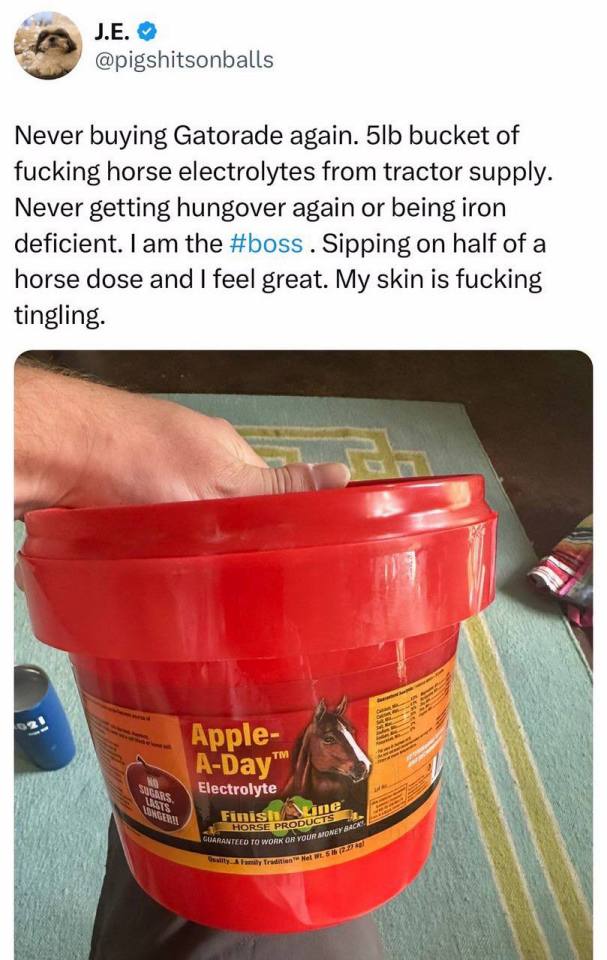
the horse electrolyte post. Now, I understand the potential issues of taking nutritional advice from someone on Twitter called Pigshitonballs, but like... he updated so much. He posted updates. he posted his blood test. he posted proof. and if you think about it, if this was all real, this man is, in some ways, a scientist. a nutritional pioneer. he tested his experiment on himself, documented it properly, and posted data from it. and it has piqued my curiousity.
so fellas, I ask you:
#polls#my polls#advice#twitter#horse#I am genuinly seriously considering it. this is not a joke#also if anyone else has done this PLEASE message me I am so curious about this#meme#horseposting#horses#nutrition#drink#beverage#electrolytes#electrolyte#vote#obviously if I started feeling doodoo garbage from this I would stop immediatley#dietetics#health#human health#food#agriculture#medicine#supplements#dietary supplements#biohacking#hydration#healthy living#wellbeing#somewhat unrelated but this is the first time I've used “piqued” correctly
18 notes
·
View notes
Text







eat your water 🥒🍓🍐🍉🍇🍌🌿
#health & fitness#question everything#healthcare#health and wellness#plantbased#reeducate yourself#veganfood#healthylifestyle#medicine#food#nutrition#hydration
30 notes
·
View notes
Text
💧 Drinking Water WRONG?! 🤯 5 Hydration Myths You Need to Stop Believing RN!
Hydration feels simple, right? Just drink water! But between the "8 glasses a day" rule and warnings about coffee, the advice can get seriously confusing. 😵💫
Are you accidentally sabotaging your hydration game based on outdated myths? Let's bust 5 common ones right now:
Myth #1: You MUST drink exactly 8 glasses (64 oz) of water per day.
BUSTED! 💥 Reality: This is a generic guideline, NOT a universal rule. Your actual water needs depend heavily on factors like your activity level, climate, body size, health status, and diet. Someone working out in the heat needs way more than someone sedentary in a cool office.
Instead: Listen to your body's thirst signals and pay attention to your urine color (aim for pale yellow).
Myth #2: If you feel thirsty, you're already dangerously dehydrated.
BUSTED! 💥 Reality: Thirst is your body's normal and healthy signal that it's time to drink fluids. It doesn't automatically mean you've hit a critical dehydration danger zone. It's simply a cue to rehydrate soon.
Instead: Sip water consistently throughout the day, and definitely drink when you feel thirsty. Don't panic!
Myth #3: Only plain water counts towards your daily hydration.
BUSTED! 💥 Reality: ALL fluids contribute to hydration, along with water-rich foods! Think milk, juice, herbal teas, soups, and even fruits and vegetables (like watermelon, cucumber, oranges). They all add water to your system.
Instead: Enjoy a variety of hydrating fluids and foods. Water is often the best choice (no calories/sugar), but it's not the only choice.
Myth #4: Coffee and tea are dehydrating because they contain caffeine.
BUSTED! 💥 Reality: While caffeine is a mild diuretic (makes you pee a bit more), the water content in coffee and tea far outweighs this effect. They still contribute a net positive amount of fluid to your daily intake.
Instead: Enjoy your coffee or tea in moderation as part of your overall fluid consumption. Just don't rely on highly caffeinated drinks as your sole source of hydration.
Myth #5: Your urine needs to be completely clear to be properly hydrated.
BUSTED! 💥 Reality: Aiming for consistently clear urine might actually mean you're over-hydrating, which can dilute electrolytes. The ideal color is typically a pale, straw-like yellow. Dark yellow usually means drink more; totally clear might mean ease up slightly.
Instead: Use urine color as a general guide, aiming for pale yellow, but don't obsess over achieving crystal clear pee all day long.
The takeaway? Hydration is more nuanced than rigid rules suggest. Focus on listening to your body, sipping fluids consistently, and enjoying water-rich foods. Stay hydrated, stay healthy! ✨
#hydration#water#healthmyths#mythbusting#wellness#healthtips#nutrition#healthyhabits#drinkwater#wellbeing#fitness#healthylifestyle#selfcare#didyouknow#sciencefacts#stayhydrated#coffeemyths#teatime#tumblrhealth
7 notes
·
View notes
Text
I love animating for 3 hours, coming out of my room for a biscuit and water to keep myself sane, and then going back into my room and animating for another 30 minutes before realizing that would be a really funny tumblr post and posting it. I feel like a cryptid
9 notes
·
View notes
Text
Why Every Online Care Course Needs a Strong Nutrition and Hydration Module in 2025
When we think of patient care, we often focus on medications, hygiene, or mobility. But behind every successful recovery story lies a quieter, often underestimated hero—nutrition and hydration. As the care sector increasingly turns to digital learning platforms, the need for a comprehensive module on this subject is no longer optional. It's essential.
In 2025, an online care course that overlooks the importance of nutrition and hydration is missing a critical piece of the puzzle. Whether you're supporting an elderly individual in a residential home or assisting a person with complex needs in the community, understanding how to promote proper nourishment and fluid intake is foundational to quality care.
The Foundation of Health: Why Nutrition and Hydration Matter
Good nutrition and hydration aren't just about eating well or drinking enough water. They're directly linked to tissue healing, mental alertness, mobility, and immune response. Malnutrition and dehydration are silent threats, particularly in vulnerable populations such as older adults, people with dementia, or individuals receiving palliative care.
A patient who is undernourished is more likely to suffer from:
Delayed wound healing
Increased risk of infections
Reduced muscle strength
Greater likelihood of falls
Cognitive decline
And these issues aren’t just medical—they impact quality of life.
In fact, according to data from frontline care professionals, over 30% of older adults in care homes are at risk of malnutrition. That’s not just a statistic—it’s a call to action.
Why Online Training Must Prioritise This Module in 2025
Online learning is now the go-to method for care training. It’s flexible, scalable, and convenient. But convenience should never compromise completeness.
Here’s why Nutrition and Hydration should be at the heart of every online care course in 2025:
1. It's a Safeguarding Issue
Neglecting a person's nutritional needs is a form of neglect. Proper training helps care professionals spot red flags such as:
Significant weight loss
Changes in appetite
Concentrated urine or dry lips
Fatigue and confusion
By including nutrition and hydration education, care workers are better equipped to safeguard the individuals they support.
Learn more about the importance of Safeguarding Children and how it links to broader care responsibilities.
2. Regulatory Compliance and Best Practice
In the UK, CQC (Care Quality Commission) and NICE (National Institute for Health and Care Excellence) guidelines both emphasise the need for effective nutritional care. For care organisations, failing to ensure staff are trained in this area can mean non-compliance—and that can lead to poor ratings or even closures.
Embedding a strong module in Nutrition and Hydration training supports regulatory alignment and gives organisations peace of mind.
3. Supports Better Communication and Decision-Making
Supporting a person’s nutritional needs isn’t just about preparing meals. It’s about understanding food preferences, cultural considerations, allergies, swallowing difficulties, and more. This requires sensitive and informed communication.
Training in Communication in Health and Social Care complements nutrition modules perfectly. Together, they empower carers to:
Discuss dietary concerns with service users
Advocate for dietetic referrals
Monitor food and fluid intake charts accurately
Case Study: The Real Impact of Poor Nutrition Training
Consider Sarah, a 78-year-old woman with early-stage dementia. She lives in a supported living setting and has always been particular about her meals. Recently, she began skipping meals and drinking less.
A care worker noticed, but—lacking training—assumed it was a “normal part of ageing.” Within weeks, Sarah was admitted to hospital with a UTI and severe dehydration.
Now imagine if that same care worker had completed a robust nutrition and hydration module. They would have:
Identified changes in eating patterns
Flagged concerns early
Suggested enriched meals or hydration techniques
Prevented an avoidable hospital admission
This is why this training isn’t just important. It’s life-saving.
Addressing the Needs of Specific Conditions
One of the most important aspects of modern care is personalisation. A one-size-fits-all approach simply doesn’t work when supporting individuals with complex or specific conditions.
Nutrition and hydration training should therefore intersect with Specific Conditions Training. Consider:
People with Parkinson’s disease often struggle with chewing or swallowing
Individuals with diabetes need structured meal planning and blood sugar monitoring
Patients on palliative care may benefit from alternative methods like syringe feeding
That’s why it’s crucial that carers also receive Syringe Driver Training, so they’re not only aware of how to nourish through alternative methods but also do so safely and with dignity.
How Nutrition Affects Wound Healing and Tissue Viability
Nutrition plays a pivotal role in recovery. When the body doesn’t get enough protein, vitamins, and hydration, wounds take longer to heal. Pressure ulcers, a serious issue in care settings, are directly impacted by poor dietary intake.
That’s why any module on nutrition must work hand-in-hand with Tissue Viability Training. Understanding how malnutrition affects skin integrity helps carers:
Choose the right dressings
Escalate nutrition concerns early
Collaborate with dietitians or district nurses
Without adequate training in both areas, carers may unknowingly delay healing or cause harm.
What Should a Strong Nutrition and Hydration Module Include?
If we’re going to raise the standard of online care courses in 2025, then the nutrition and hydration module needs to go beyond “drink 8 glasses of water a day.” Here’s what it should include:
Understanding Macronutrients and Micronutrients
Recognising the Signs of Malnutrition and Dehydration
Hydration Strategies for Non-Verbal or Cognitively Impaired Individuals
Swallowing Difficulties and Modified Diets
Monitoring and Recording Intake Accurately
Working in Partnership with Dietitians and Families
Legal and Ethical Considerations in Nutritional Care
And importantly—real-world scenarios and interactive assessments to ensure the knowledge is understood and retained.
Trends for 2025: What Learners Expect from Online Care Training
Today’s learners are looking for more than just a PDF and a quiz. To engage and upskill staff, online care courses in 2025 must be:
Interactive and scenario-based
Mobile-friendly for on-the-go learning
CPD-certified to support career progression
Aligned with the latest NICE and CQC standards
Flexible yet detailed
The Nutrition and Hydration Training course from Shreeji Training checks all these boxes—making it an ideal choice for care professionals at every level.
Final Thoughts: Raising the Bar in Care Through Better Training
Nutrition and hydration affect everything—from how wounds heal to how a person feels emotionally. If we’re serious about raising standards in care, then we must be serious about training in these fundamentals.
In 2025, every online care course should include a strong nutrition and hydration module. Not just for regulatory compliance, but because lives truly depend on it.
Let’s give care workers the tools they need to make better decisions. Let’s support safer, more personalised, and more effective care.
Because when carers understand nutrition, they nourish more than just bodies—they nourish lives.
Source : https://shreejitraining11.blogspot.com/2025/05/why-every-online-care-course-needs.html
0 notes
Text
Hydration 💧🚰💦
youtube
#crueltyfree#plantbased#vegan#veganlife#animalrights#veganforum#veganfood#vegansearchengine#caavakushi#veganblog#hydration#hydrate#vegan podcast#vegan newsletter#simnett nutrition#Youtube
7 notes
·
View notes
Text


Change is good so I’m taking a rain check in the fitness break but also making sure my nutrition is right! Need to stay focused on me inside & out! I haven’t been doing to well on that part! Been getting headaches from being malnourished so yeah that’s the focus 🧘🏽♀️
14 notes
·
View notes
Photo
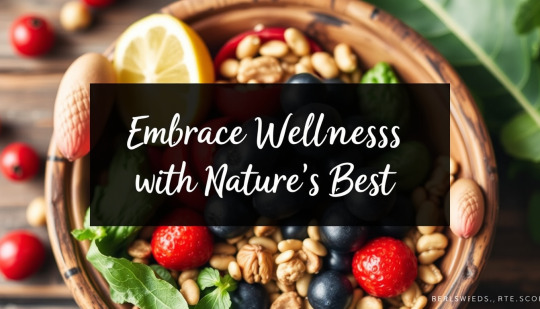
### Embrace Wellness with Nature's Best 🌿✨ In a world teeming with stress, create space for rejuvenation! Let’s dive into actionable wellness tips infused with the goodness of nature. **☀️ Morning Rituals for Optimal Health:** - **Hydrate:** Start your day with a glass of warm water with lemon to awaken your digestive system. - **Move:** Incorporate gentle stretching or yoga to invigorate your body and mind. - **Breathe:** Spend 5 minutes in silent meditation to ground your thoughts and intentions for the day. **🥑 Nutrition Nuggets:** - **Whole Foods:** Focus on colorful, plant-based meals that nourish your body. Think greens, berries, nuts, and seeds! - **Mindful Eating:** Take a moment to appreciate the flavors and textures of your food. This enhances digestion and satisfaction. **🌙 Evening Wind Down:** - **Digital Detox:** Switch off screens at least an hour before bed to promote better sleep quality. - **Gratitude Journaling:** Reflect on three things you’re grateful for each night to cultivate positive thinking. Integrate these simple yet potent practices into your routine, and watch as you blossom into your best self. Remember, wellness is a journey—be gentle with yourself and enjoy each step! 🌸💪 #Wellness #NaturalHealth #Mindfulness #OptimalHealth #Biohacking #SelfCare #NatureInspired
5 notes
·
View notes
Text
How Much Protein in a Chicken Thigh? Comparing Different Cuts of Chicken
Introduction
Protein is a pivotal macronutrient of great essence for most bodily functions, from muscle generation and tissue repair to bolstering the immune system. For the purposes of protein sourcing, chicken remains the most preferred due to its being clean, versatile, and reasonably priced, thereby being everybody's choice.
This article will explore how much protein chicken thighs contain relative to other chicken cuts: breast, drumsticks, wings, and tenderloin. We shall provide a nutritional breakdown of each cut to enable you to choose the cut most appropriate for your dietary requirements.
#chicken#health & fitness#fitness#nutrition#healthy food#workout#gym#antioxidants#hydration#vitamins#skin health#protein#healthy fats#minerals#counting calories
4 notes
·
View notes
Video
youtube
Building Health Diet and Preparation for Muscles and OrgansBuilding health is not just about working out and maintaining a fit physique; it's also about taking care of our internal organs. Our muscles and organs are crucial for our overall health and wellbeing. Therefore, it's essential to provide them with the right nutrients and care to function optimally. This article will guide you through crafting a nutritious diet for optimal muscle and organ health and provide details on what kind of food to eat and how to cook it.
Please visit https://youtube.com/@HealthDishes
Crafting a Nutritious Diet for Optimal Muscle and Organ Health
To ensure optimal muscle and organ health, it's crucial to focus on a balanced and nutritious diet. Proteins are the building blocks for muscles; hence, incorporate lean proteins like chicken, fish, eggs, and plant-based proteins like lentils and tofu into your diet. Additionally, organs like the heart and liver benefit from Omega-3 fatty acids found in fatty fishes like salmon and mackerel. Fruits and vegetables rich in antioxidants, vitamins, and minerals help in detoxifying organs and boosting immunity. Also, don't forget to hydrate; water plays a significant role in maintaining organ health and muscle function.
Details on what kind of food to eat and how to cook it
When it comes to cooking for muscle and organ health, the method of preparation matters. Steaming, grilling, and baking are healthier alternatives to frying, as they retain more nutrients. For proteins, opt for lean cuts and remove visible fat before cooking. Cook fish and chicken in a variety of ways, including grilling, baking, or poaching to avoid adding unnecessary fats. When preparing vegetables, try to avoid overcooking them as this can lead to loss of essential vitamins and minerals. Instead, lightly steam or sauté them to retain their nutritional value.
#HealthyLiving, #Nutrition, #MuscleHealth, #OrganHealth, #Diet, #Protein, #Antioxidants, #Hydration, #CookingTips, #BalancedDiet
In conclusion, building health for muscles and organs goes beyond regular exercise. It requires a conscious effort to maintain a balanced and nutritious diet. By incorporating lean proteins, Omega-3 fatty acids, and a variety of fruits and vegetables into your diet, you can ensure optimal muscle and organ health. Moreover, choosing healthier cooking methods like steaming, grilling, and baking can help retain the nutritional value of these foods. So, take a step towards a healthier you by making these simple dietary changes.
#youtube#nutrition#antioxidants#hydration#cooking tips#balanceddiet#organhealth#healthyliving#protein#musclehealth
3 notes
·
View notes
Text
🌿 Simple, Sustainable Tips for Weight Loss 🌿
When it comes to weight loss, it’s easy to feel overwhelmed by all the information out there. But the truth is, lasting changes often come from small, sustainable habits that you can incorporate into your daily routine. Here are some tried-and-true tips to help you get started:
1. Focus on Whole Foods 🍎
Filling your plate with nutrient-dense foods like fruits, vegetables, lean proteins, and whole grains will not only support weight loss but also nourish your body. These foods help you feel full and satisfied, preventing overeating. Think leafy greens, colorful veggies, and high-fiber grains like quinoa or brown rice!
2. Stay Active Consistently 🏋️♀️
You don’t need to hit the gym for hours every day—just focus on staying active in a way that you enjoy! Whether it’s walking, dancing, yoga, or strength training, find something you love. The key is consistency. Aim for at least 30 minutes of movement each day.
3. Prioritize Sleep 💤
Sleep plays a huge role in weight loss and overall health. When you're well-rested, your body regulates hunger hormones better, and you'll have more energy for exercise and making healthy food choices. Aim for 7-9 hours of quality sleep each night.
4. Drink Plenty of Water 💧
Sometimes, thirst is mistaken for hunger. Staying hydrated helps control cravings, supports digestion, and keeps your metabolism running smoothly. Keep a water bottle with you and aim for at least 8 glasses a day.
5. Consider Adding Superfood Powders 🌱
Superfood powders like spirulina, chlorella, and matcha are rich in nutrients and can support your metabolism, boost energy, and aid digestion. They’re an easy way to enhance your nutrition and promote weight loss naturally.
6. Be Kind to Yourself 💖
Weight loss is a journey, not a race. Progress takes time, so celebrate the small victories along the way. Remember that it's about creating a healthier lifestyle, not just hitting a number on the scale.
For a deeper dive into how superfoods can support your weight loss goals, check out this comprehensive guide to the best options. You’ll find everything you need to make an informed choice for your health and wellness. 🌟
#weightloss#fitness#healthyliving#superfoods#nutrition#health#wellness#weightlossjourney#naturalweightloss#wholefoods#exercise#selfcare#metabolism#stayactive#wellnesstips#fitspo#hydration#superfoodpowder#holistichealth#lifestylechange
12 notes
·
View notes